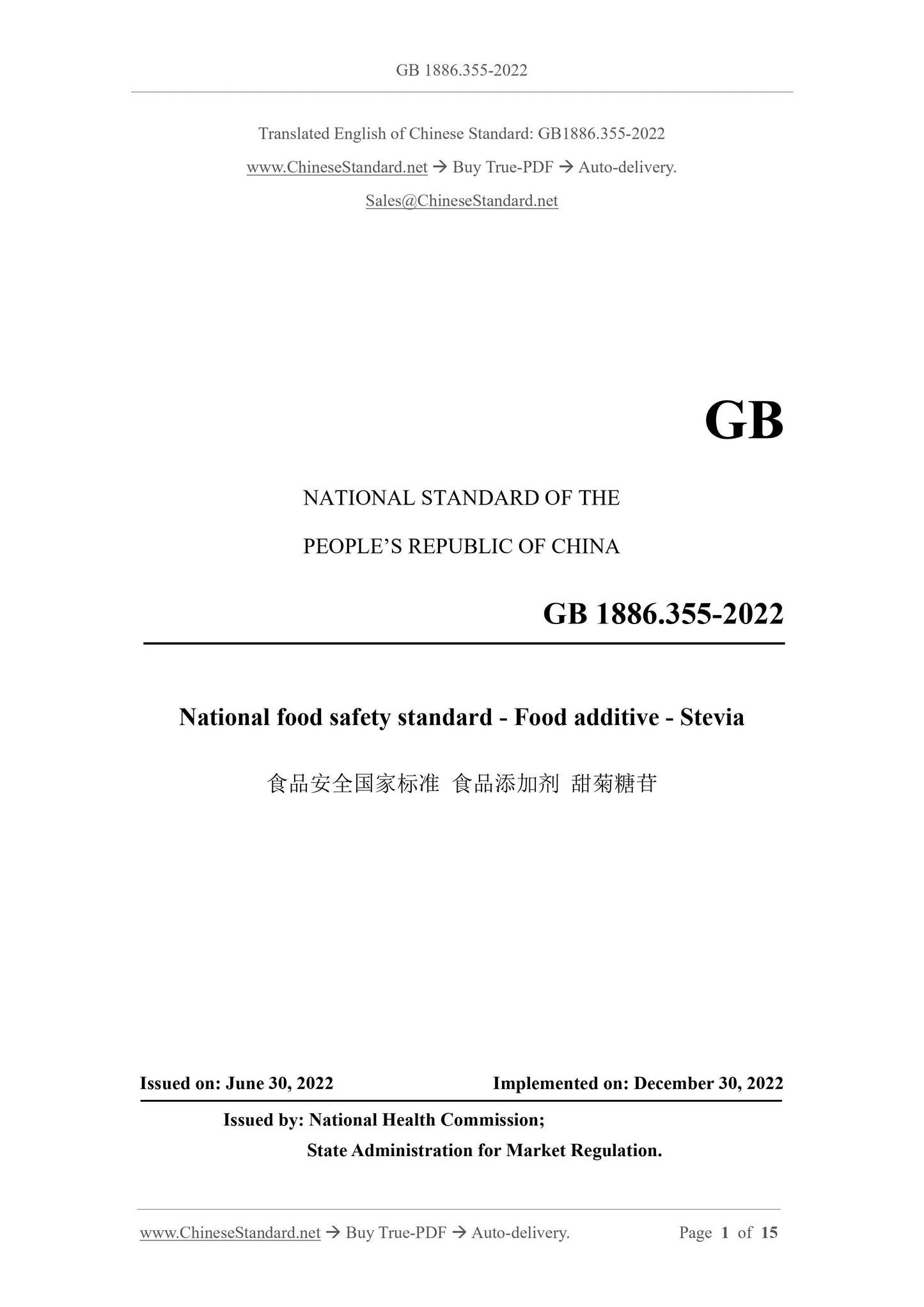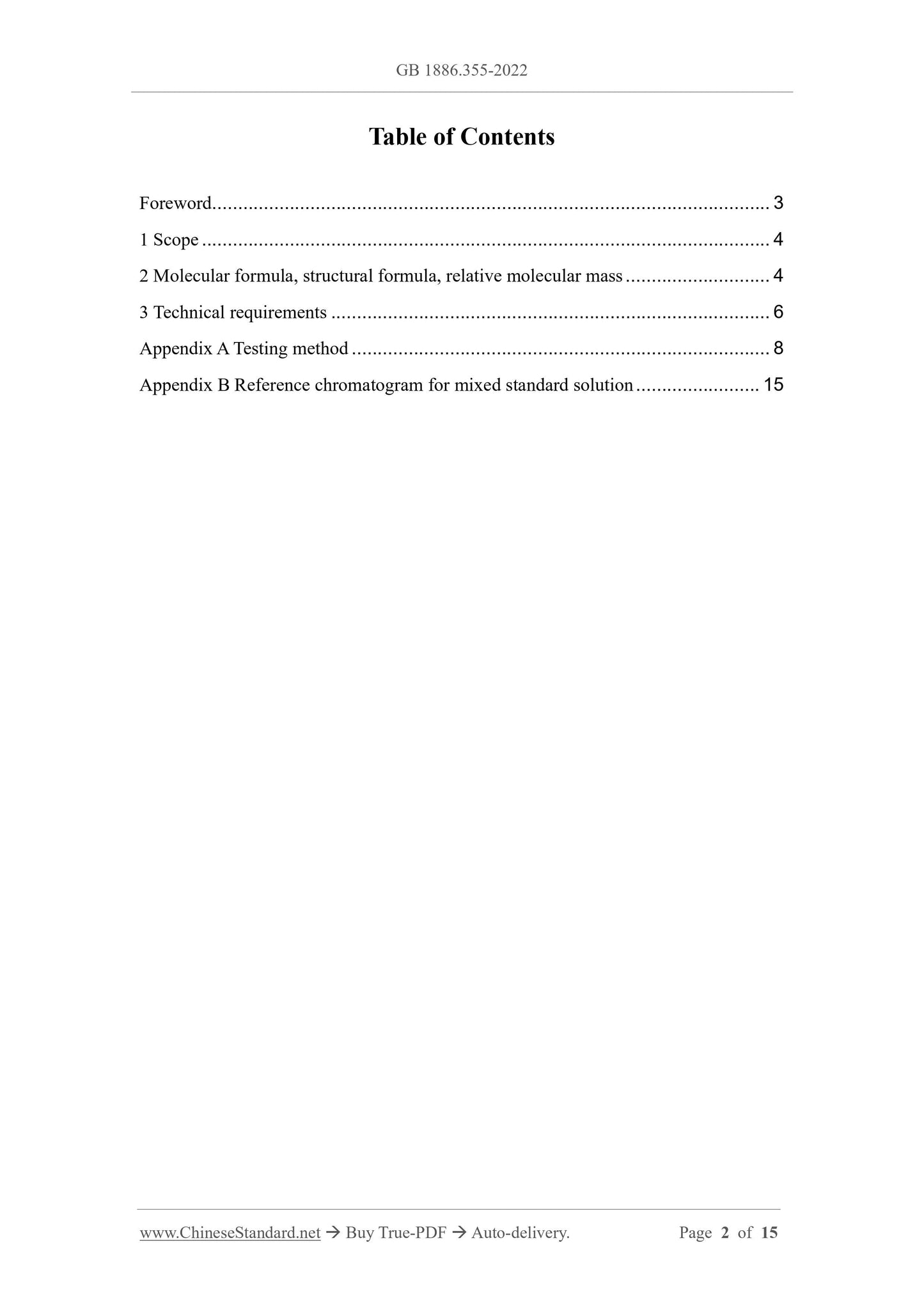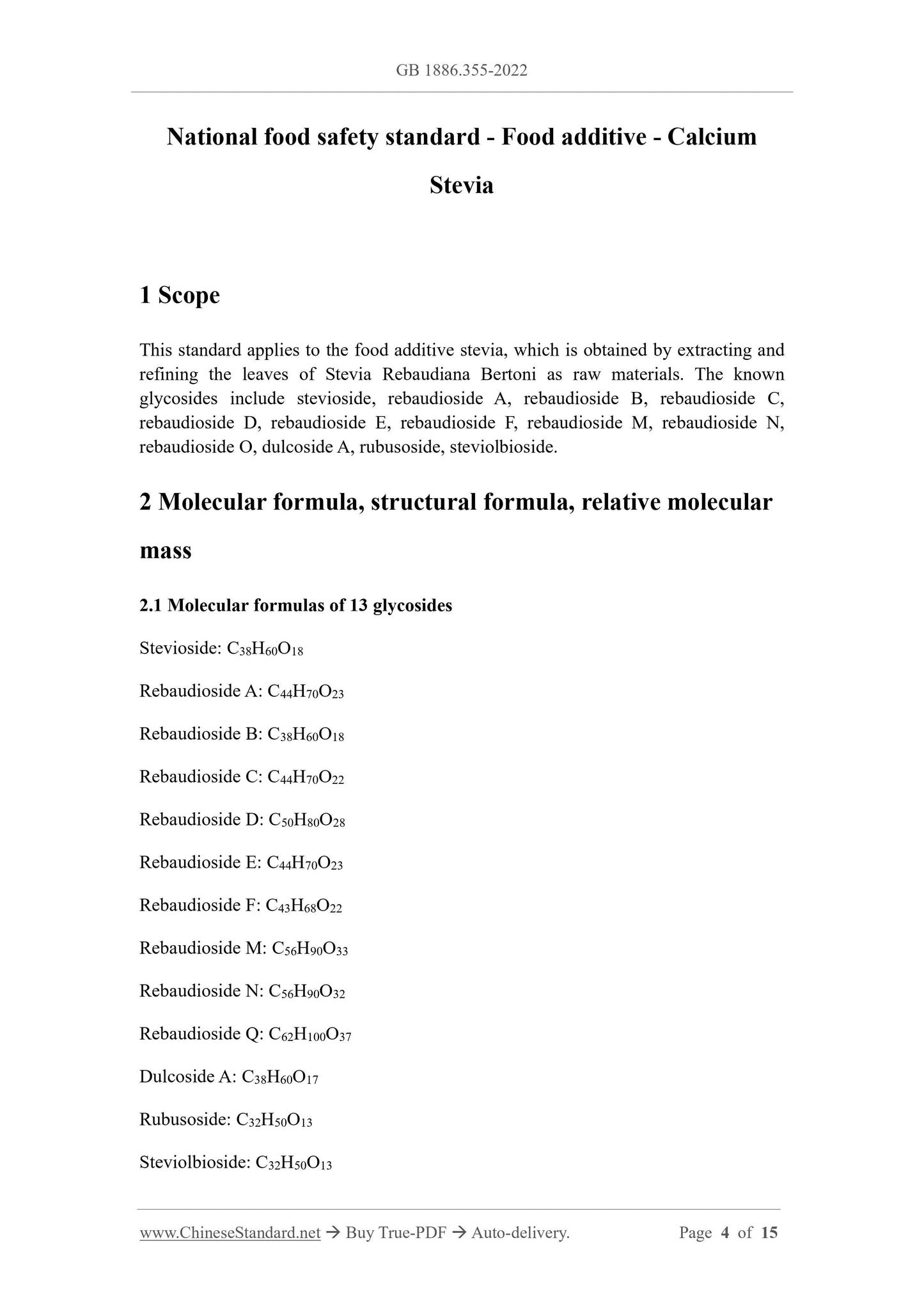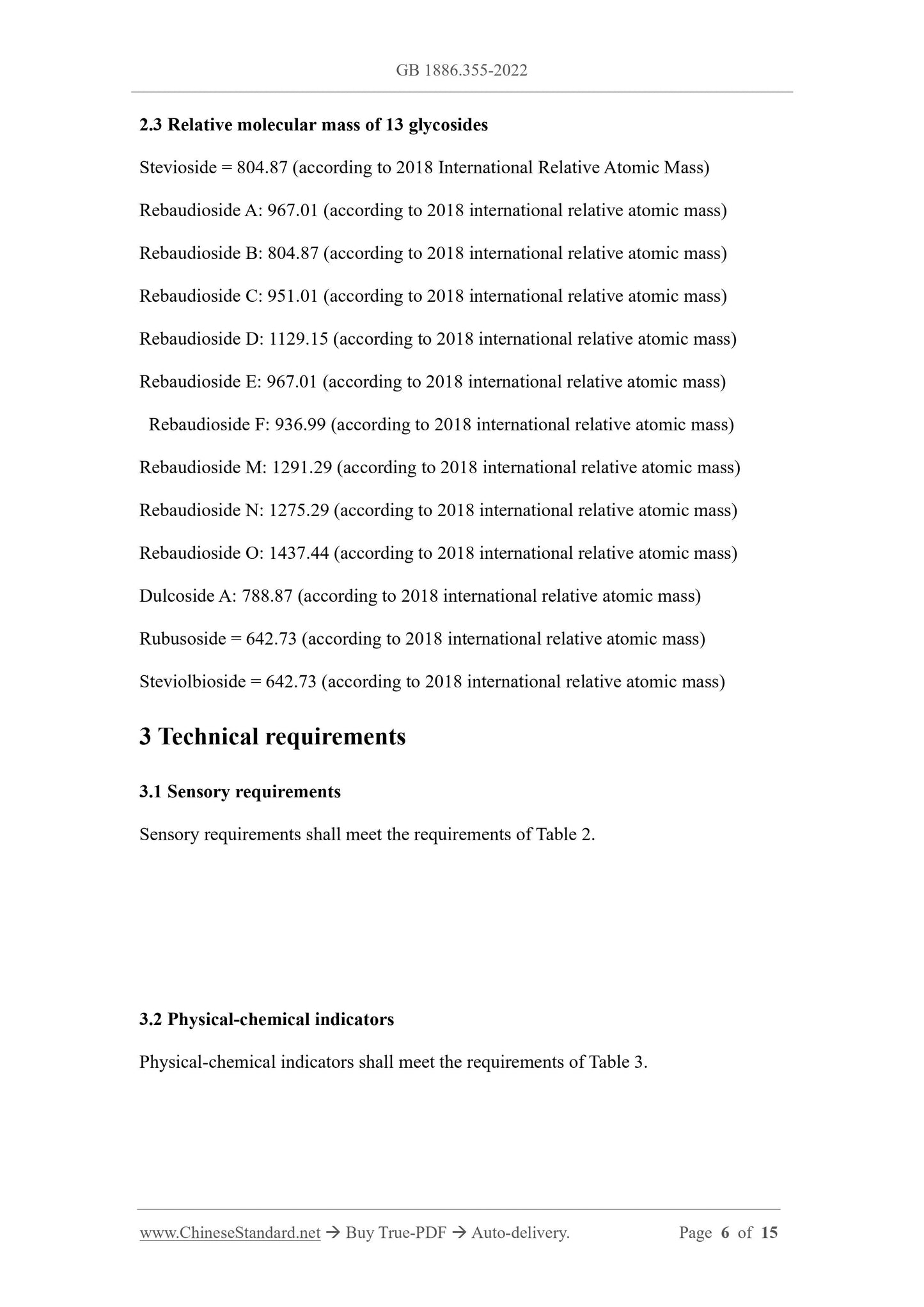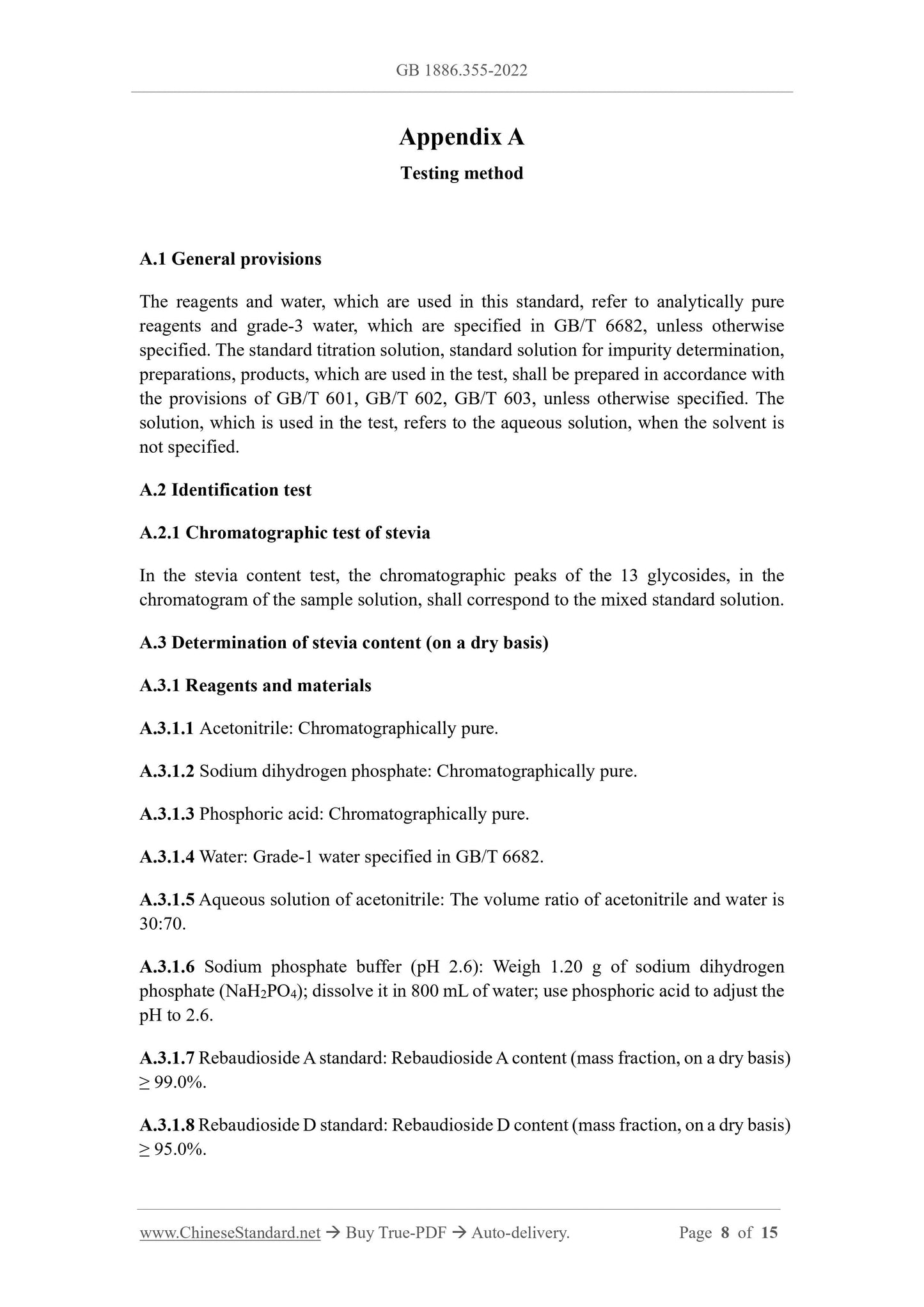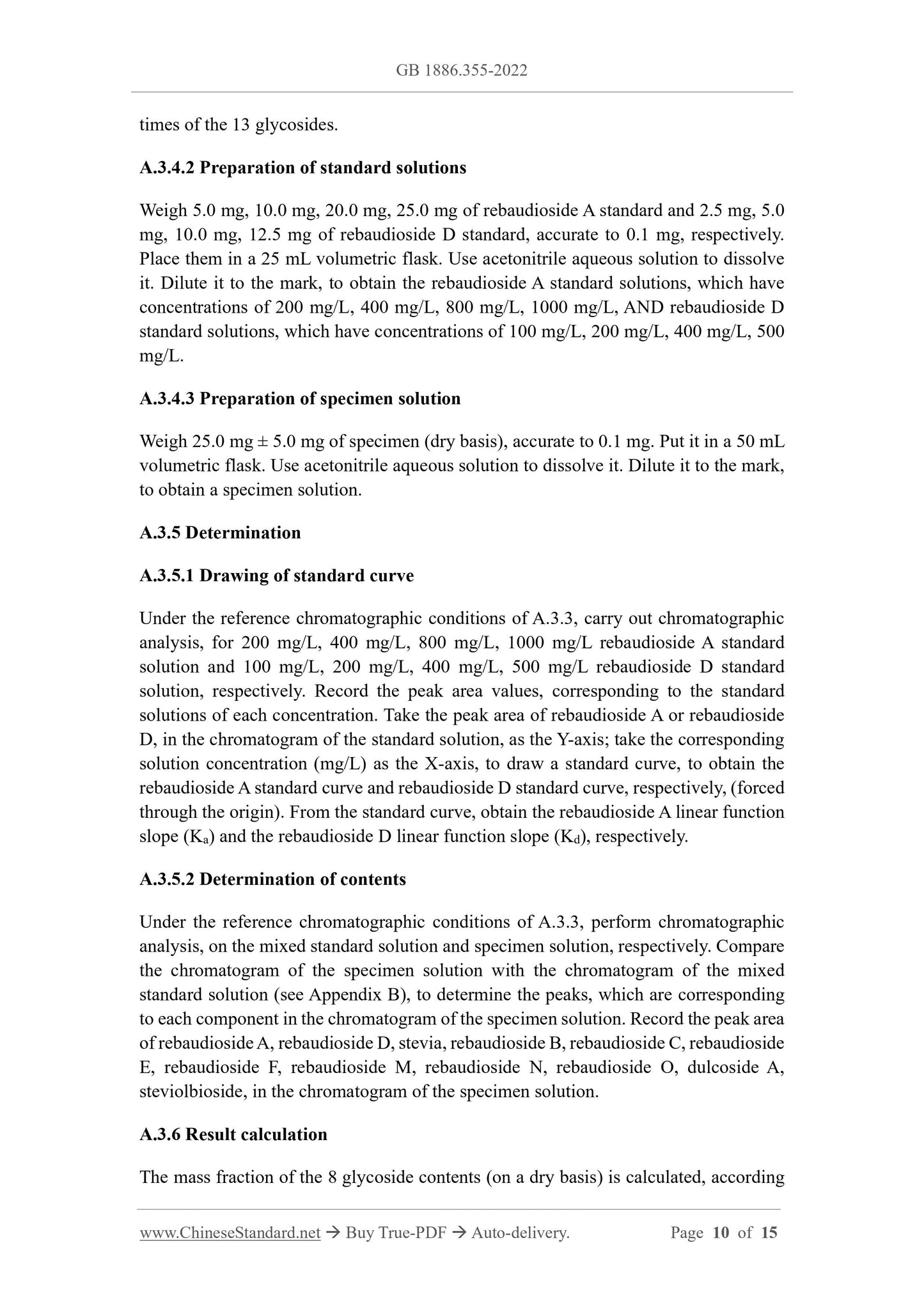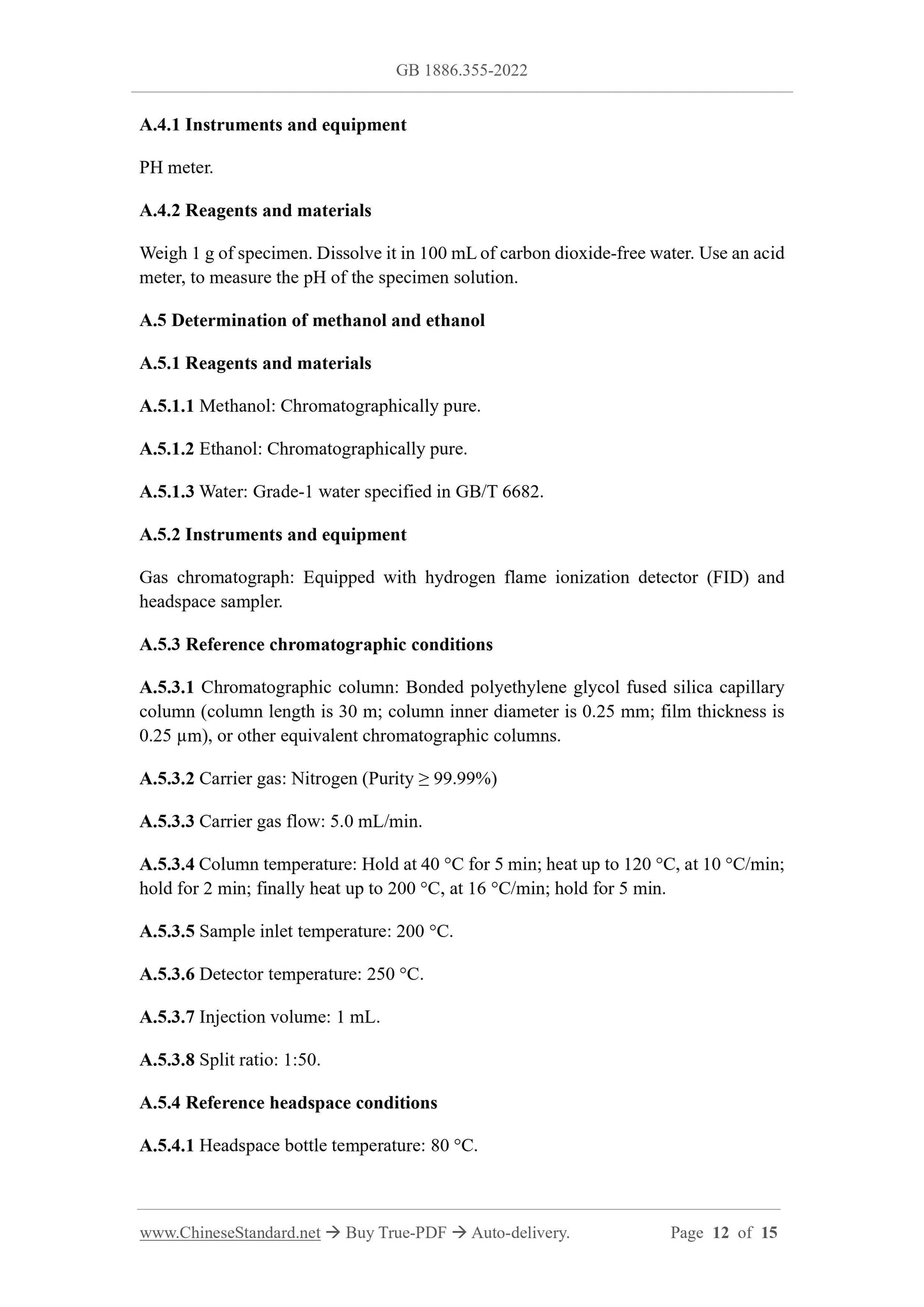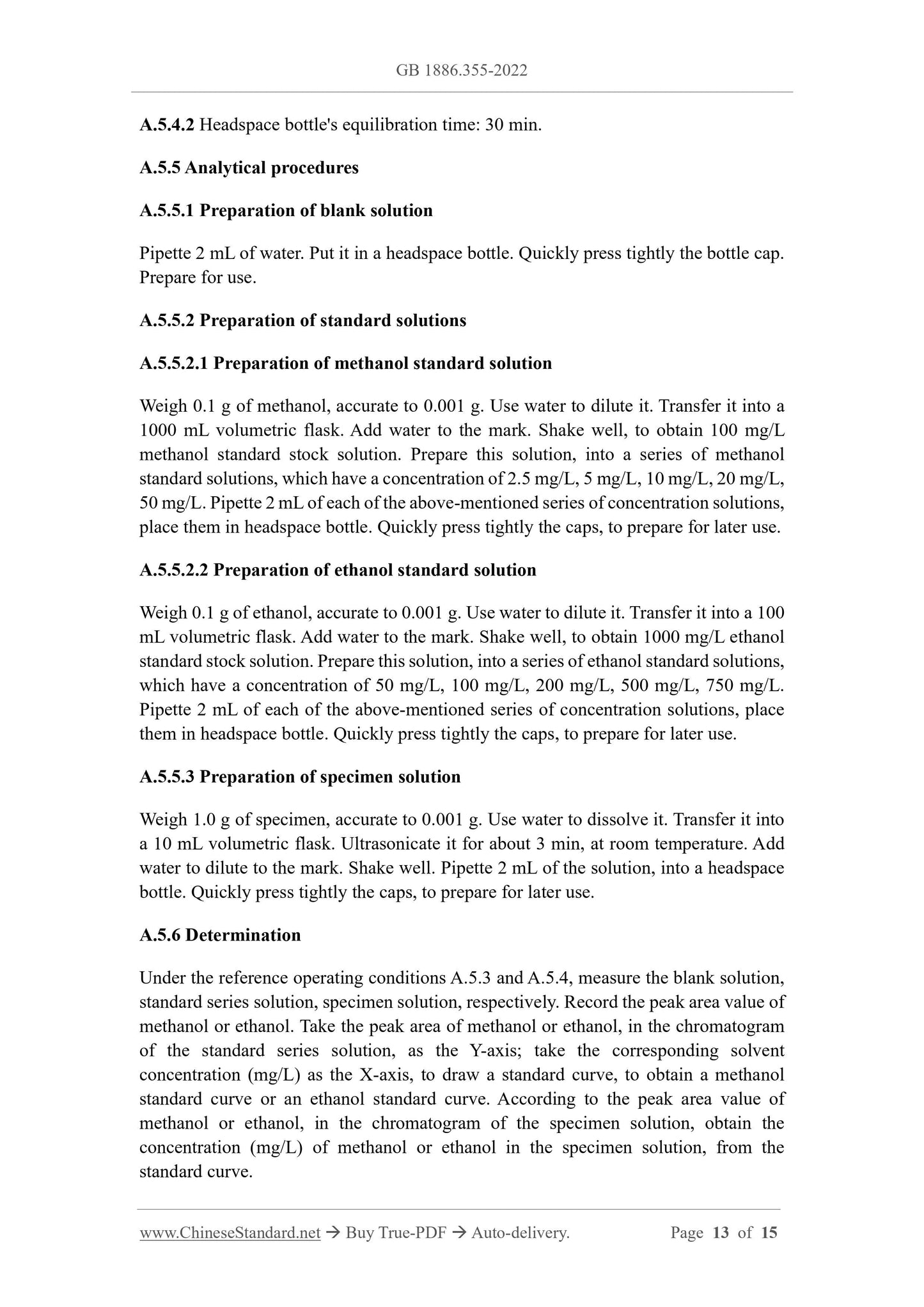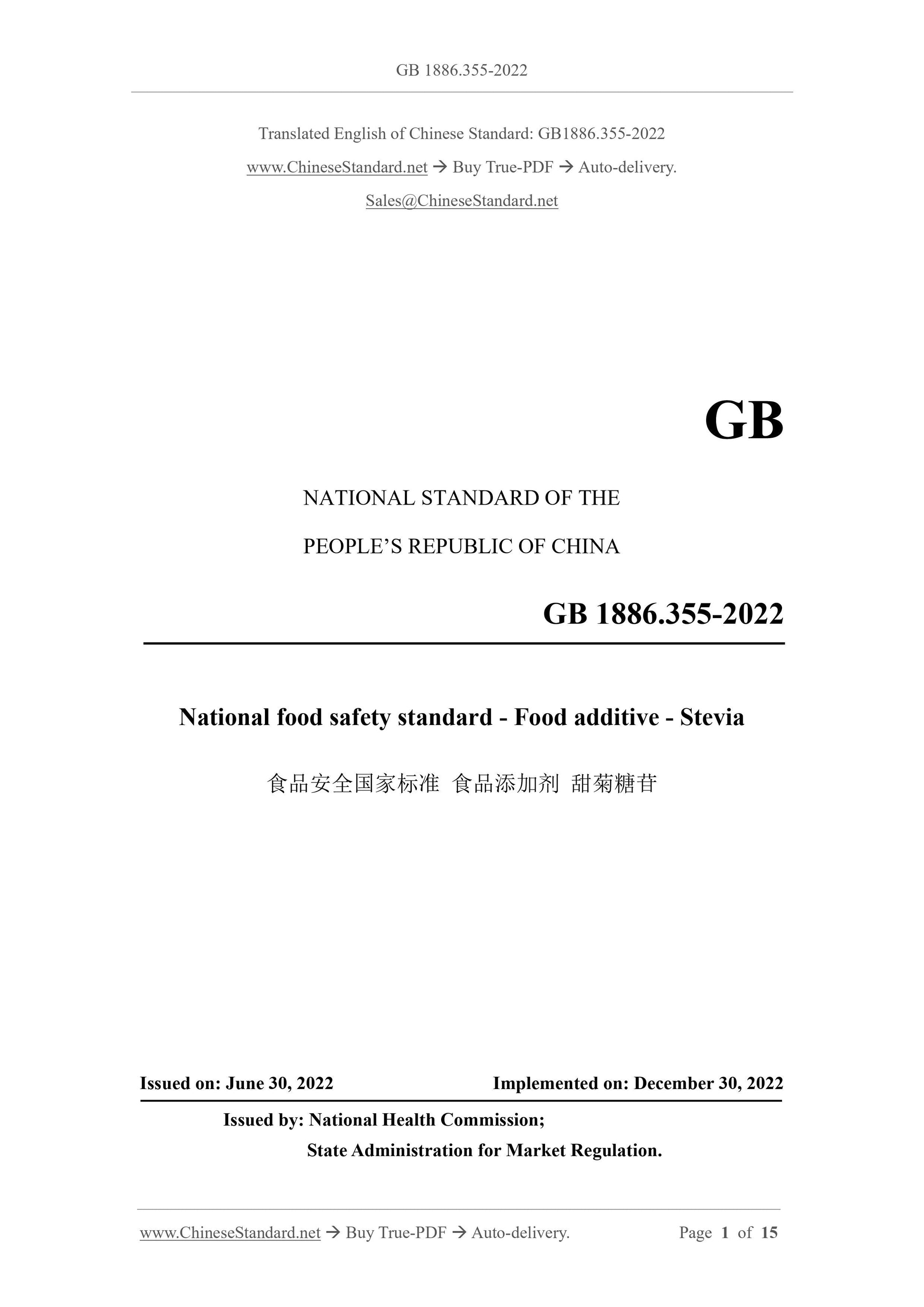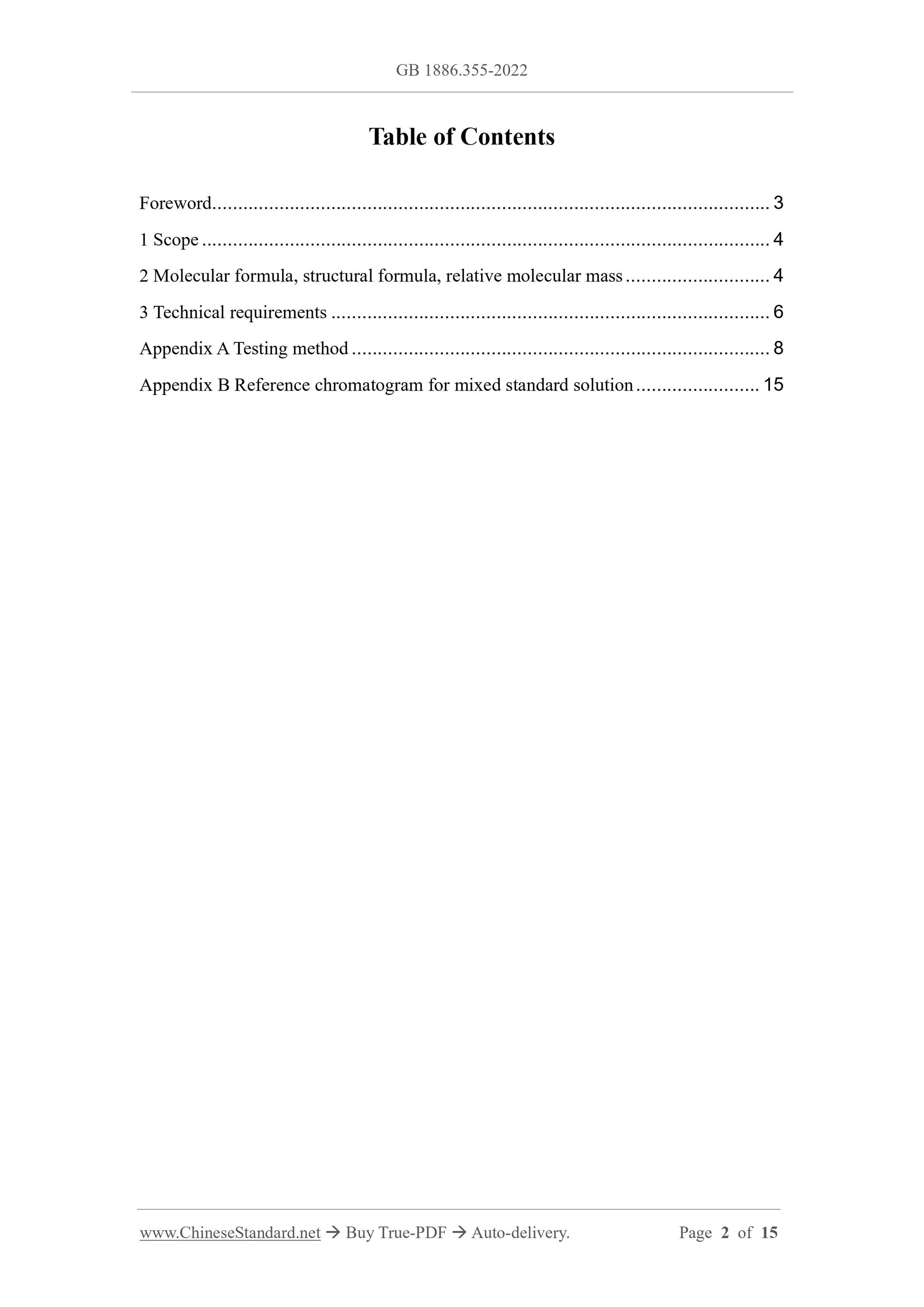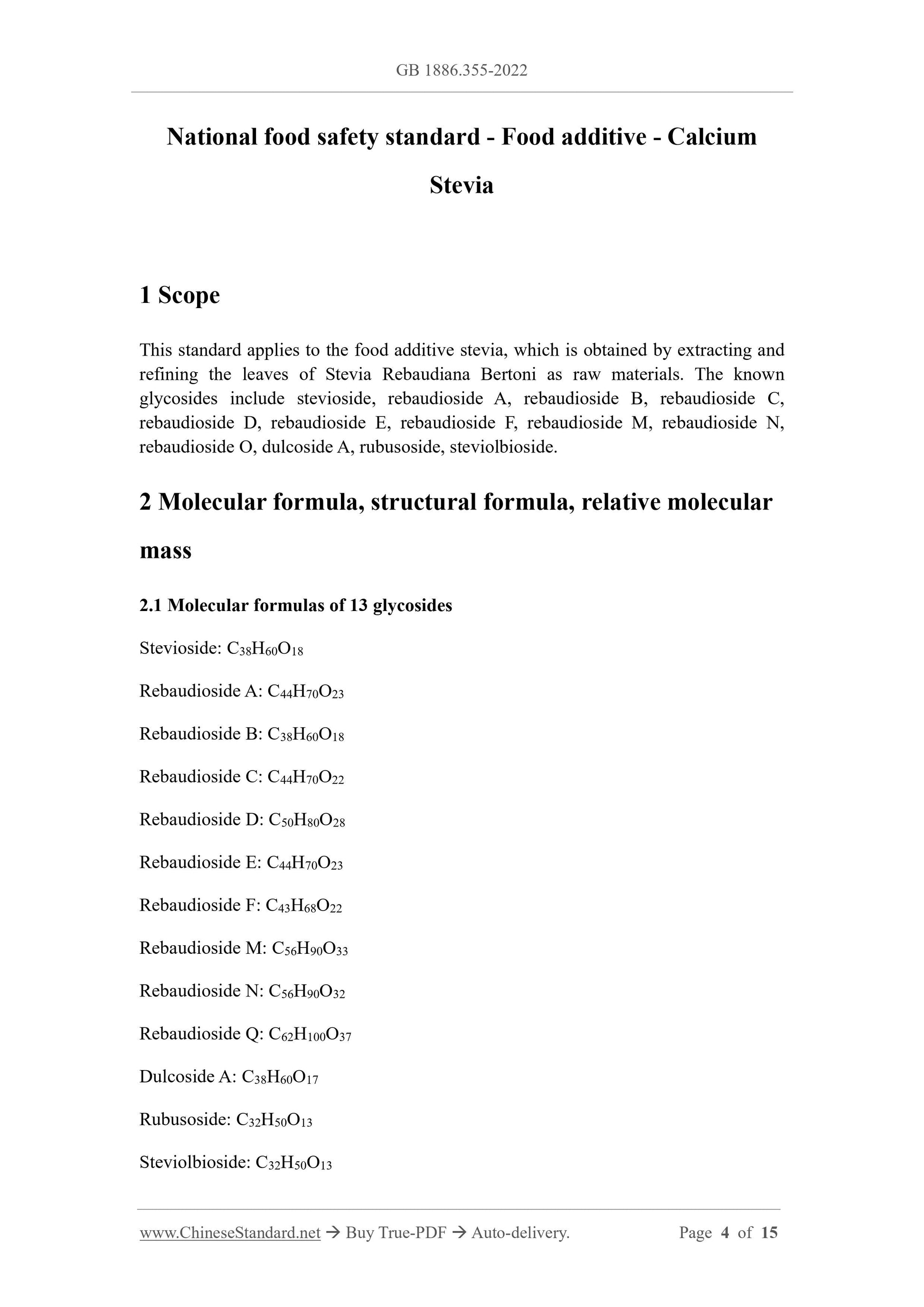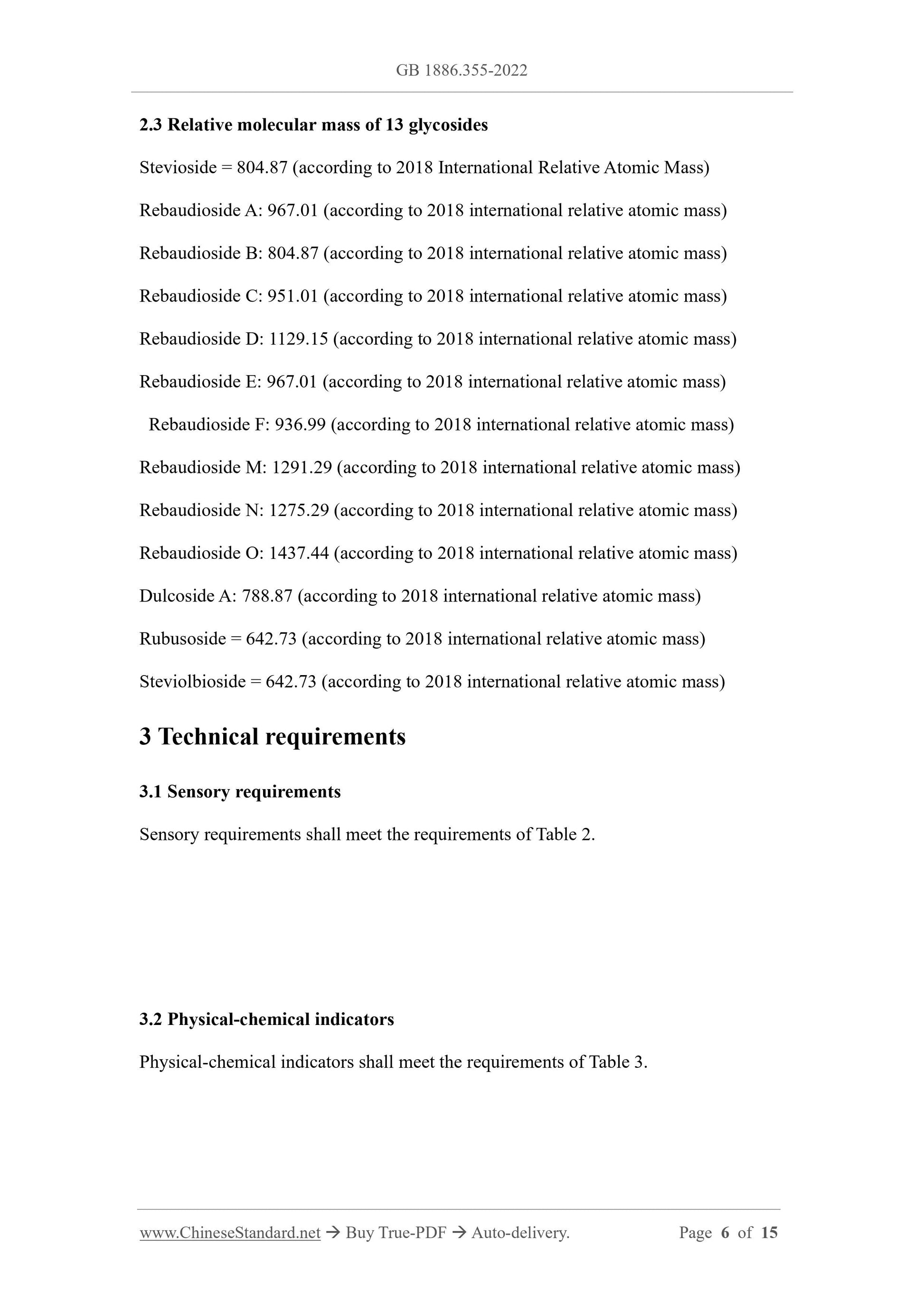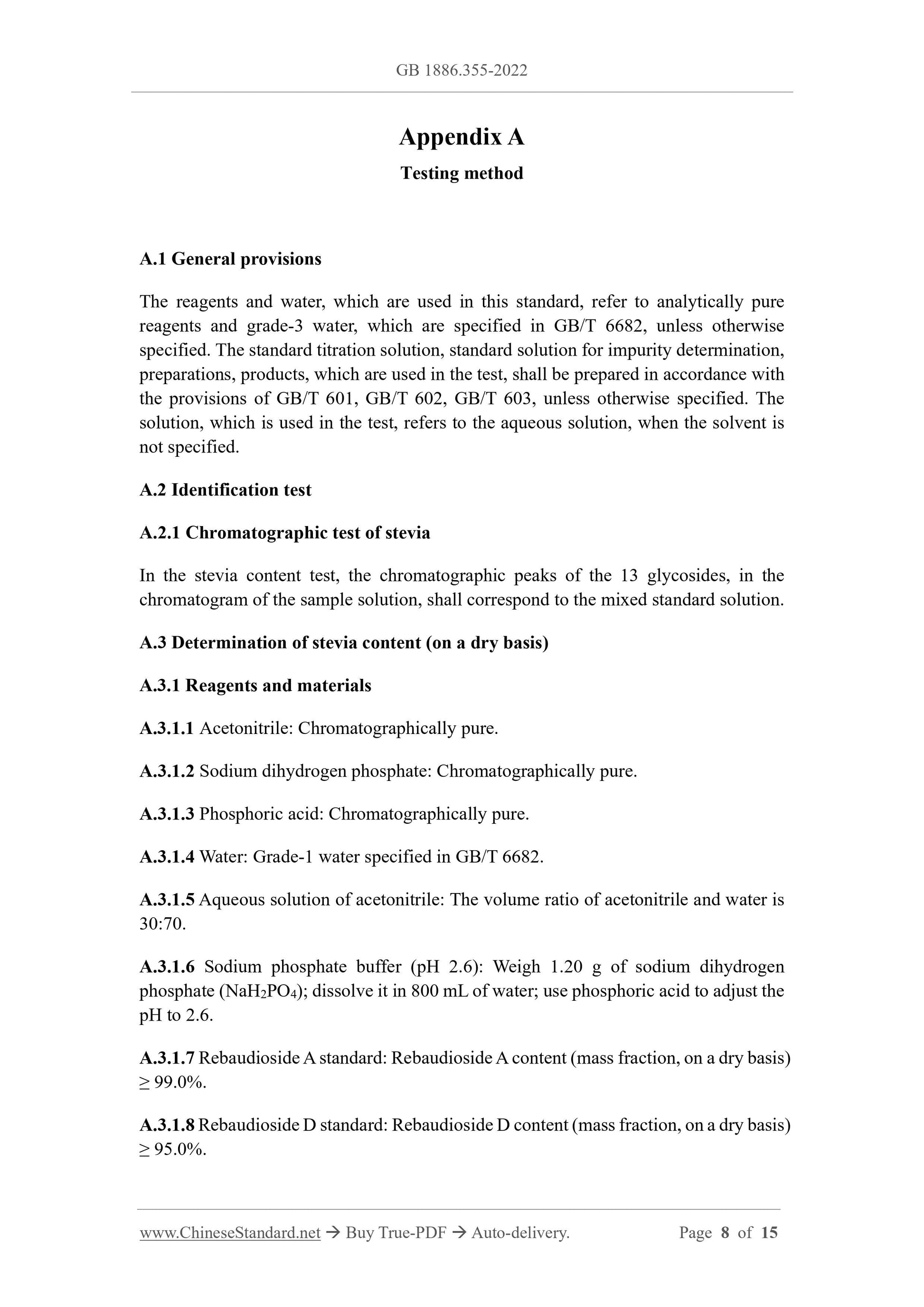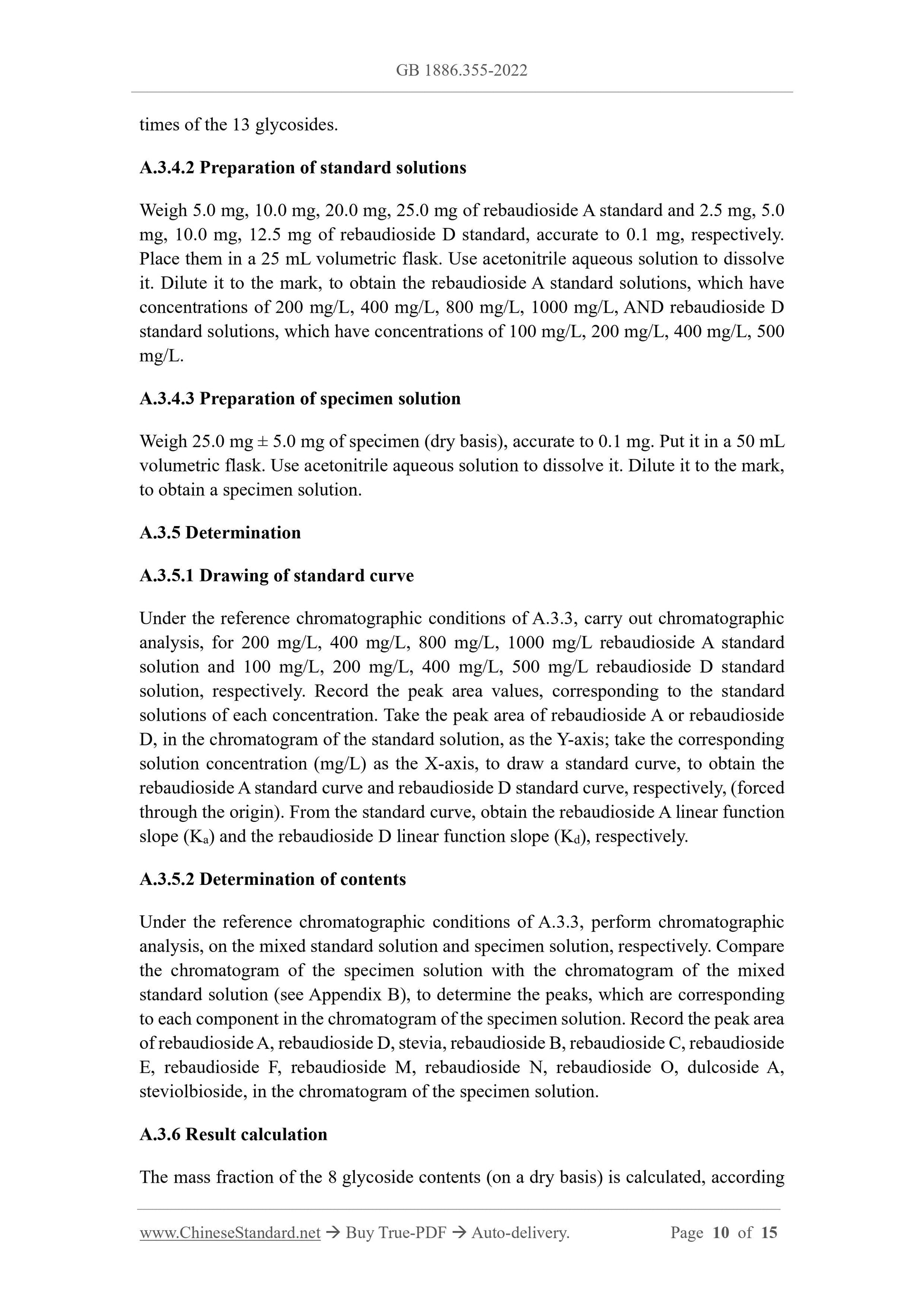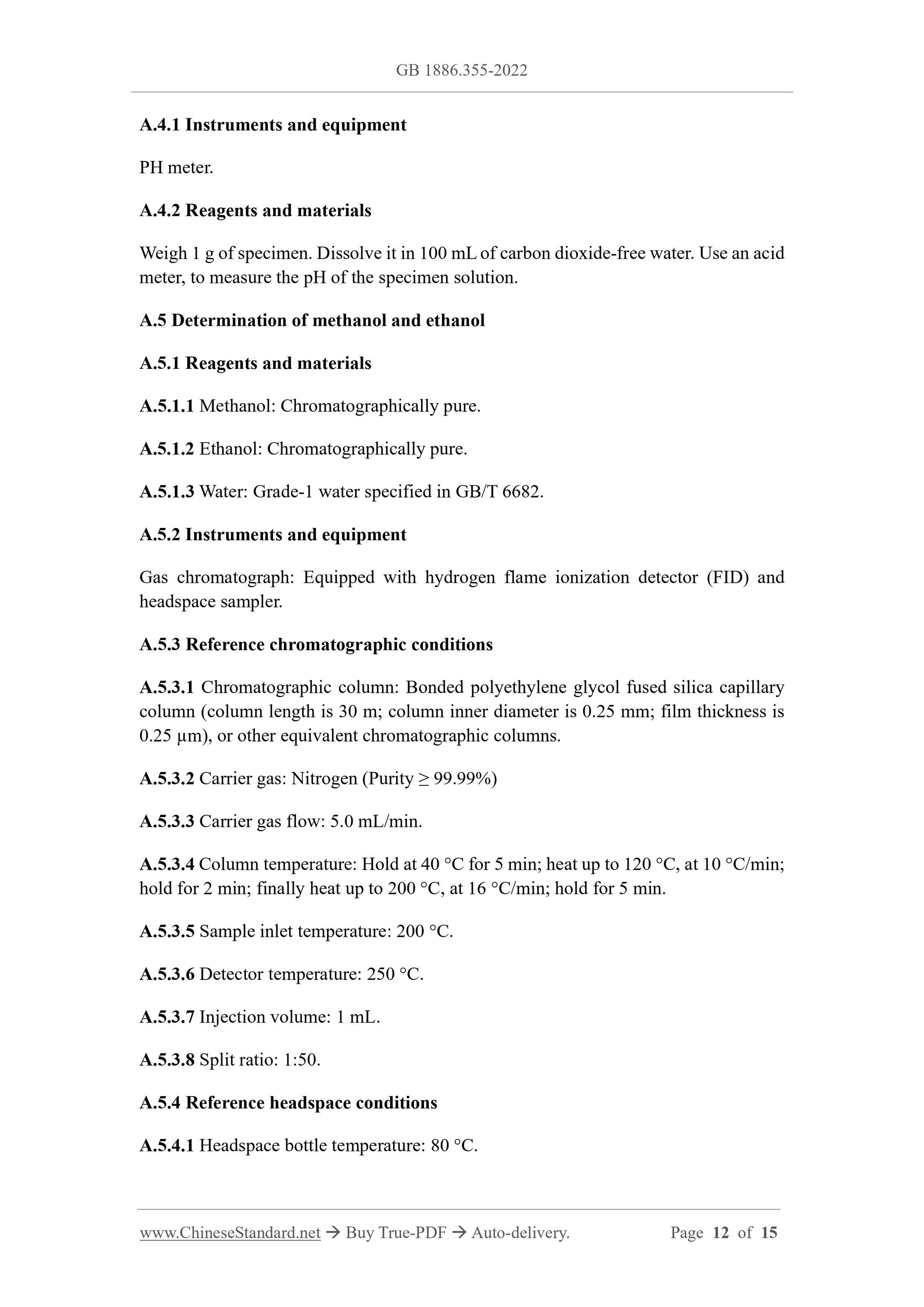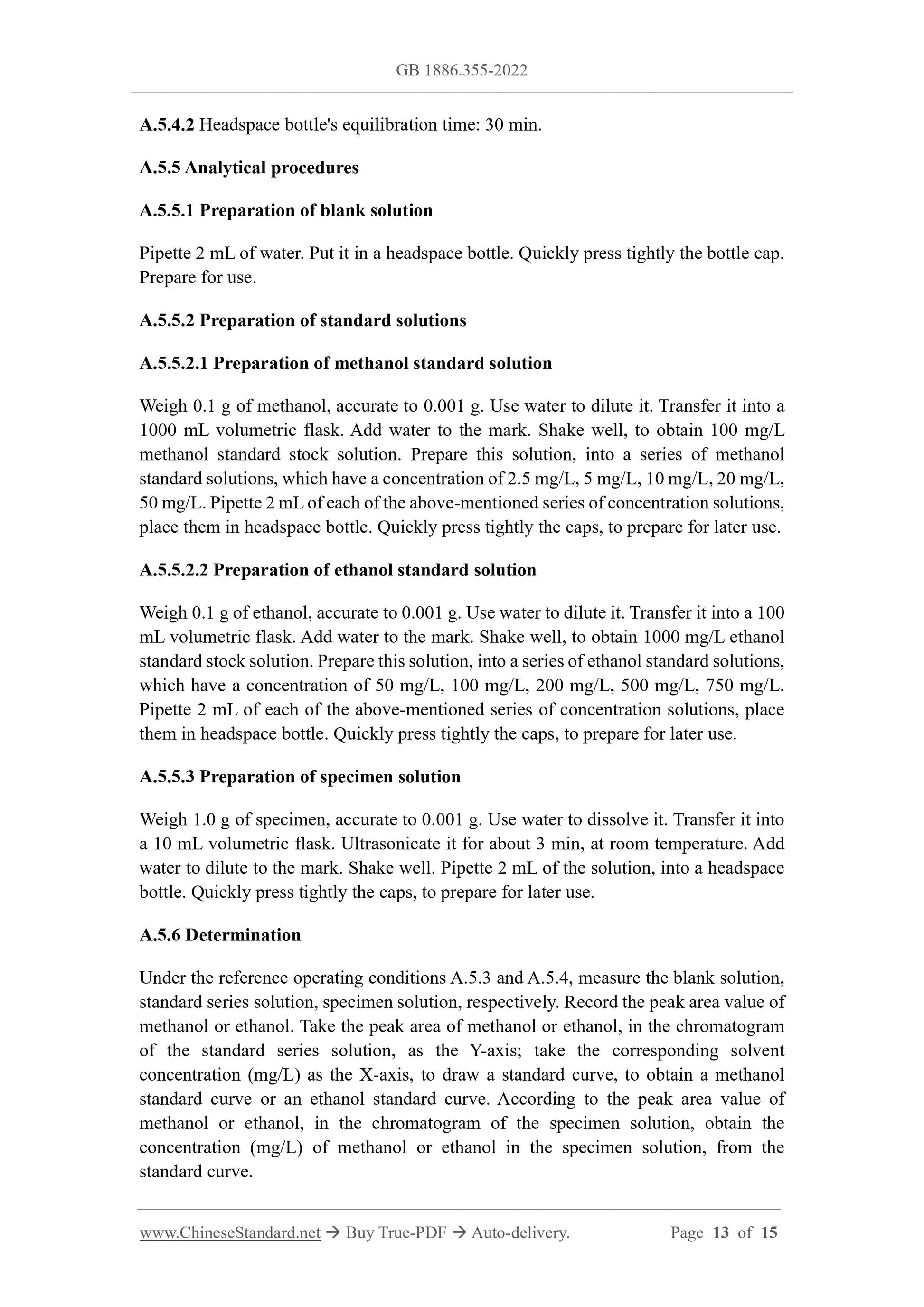1
/
of
8
www.ChineseStandard.us -- Field Test Asia Pte. Ltd.
GB 1886.355-2022 English PDF
GB 1886.355-2022 English PDF
Regular price
$155.00
Regular price
Sale price
$155.00
Unit price
/
per
Shipping calculated at checkout.
Couldn't load pickup availability
GB 1886.355-2022: National food safety standard - Food additives - Stevia
Delivery: 9 seconds. Download (and Email) true-PDF + Invoice.Get Quotation: Click GB 1886.355-2022 (Self-service in 1-minute)
Newer / historical versions: GB 1886.355-2022
Preview True-PDF
Scope
This standard applies to the food additive stevia, which is obtained by extracting andrefining the leaves of Stevia Rebaudiana Bertoni as raw materials. The known
glycosides include stevioside, rebaudioside A, rebaudioside B, rebaudioside C,
rebaudioside D, rebaudioside E, rebaudioside F, rebaudioside M, rebaudioside N,
rebaudioside O, dulcoside A, rubusoside, steviolbioside.
Basic Data
| Standard ID | GB 1886.355-2022 (GB1886.355-2022) |
| Description (Translated English) | National food safety standard - Food additives - Stevia |
| Sector / Industry | National Standard |
| Classification of Chinese Standard | X09 |
| Word Count Estimation | 12,169 |
| Issuing agency(ies) | National Health Commission of the People's Republic of China, State Administration for Market Regulation |
Share
